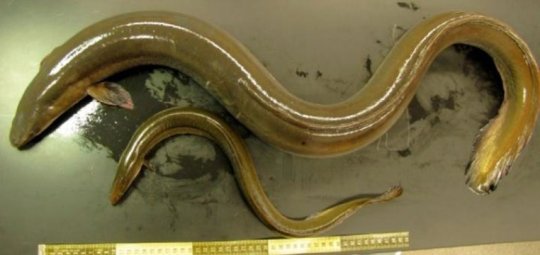
Both freshwater and brackish American eels are the same species, but they vary in size and have very different growth rates and life spans. Once a year, sexually mature eels from both groups migrate thousands of miles to spawn in the Sargasso Sea (located in the North Atlantic Ocean east of Bermuda). The offspring are carried off by the current to their new homes. It's been thought that young American eels can detect whether they've ended up in brackish or freshwater habitats and acclimate accordingly. But this new study suggests that eels are predisposed to survive in these environments, depending on what genes they inherited.
"People have considered these differences in growth and age to be 100 percent due to phenotypic plasticity, independent of the genotype," says lead author Scott Pavey, a postdoctoral fellow at the Integrated Biology Institute of Laval University in Quebec, Canada. "But what we found is that genes affect whether an eel can survive freshwater or brackish environments." This helps explain why some conservation efforts to preserve the freshwater eel haven't been successful, as more plentiful brackish eels cannot easily change their traits to survive in freshwater environments.
Pavey, in collaboration with ecologist Louis Bernatchez and colleagues, used new sequencing technologies to screen the eel genome in 45,000 places. The analysis identified 99 genes that differ between freshwater and brackish eels, including those associated with growth rate, heart development, and smell. It's unknown whether this type of genetic differentiation exists in other, non-eel marine species with high levels of phenotypic plasticity.
The question remains, though, as to why eels would have such a strange approach to survival. The fish is considered evolutionarily ancient, so they must be doing something right. "It's a different strategy, a kind of hedging your bets," speculates Pavey. His team is now working to publish and release the entire genome of the eel. This will provide an important tool for other researchers to conduct similar studies on different aspects of eel ecology.
Story Source:
The above story is based on materials provided by Cell Press.Note: Materials may be edited for content and length.
Journal Reference:
- Scott A. Pavey et al. RAD Sequencing Highlights Polygenic Discrimination of Habitat Ecotypes in the Panmictic American Eel. Current Biology, May 2015 DOI:10.1016/j.cub.2015.04.062

